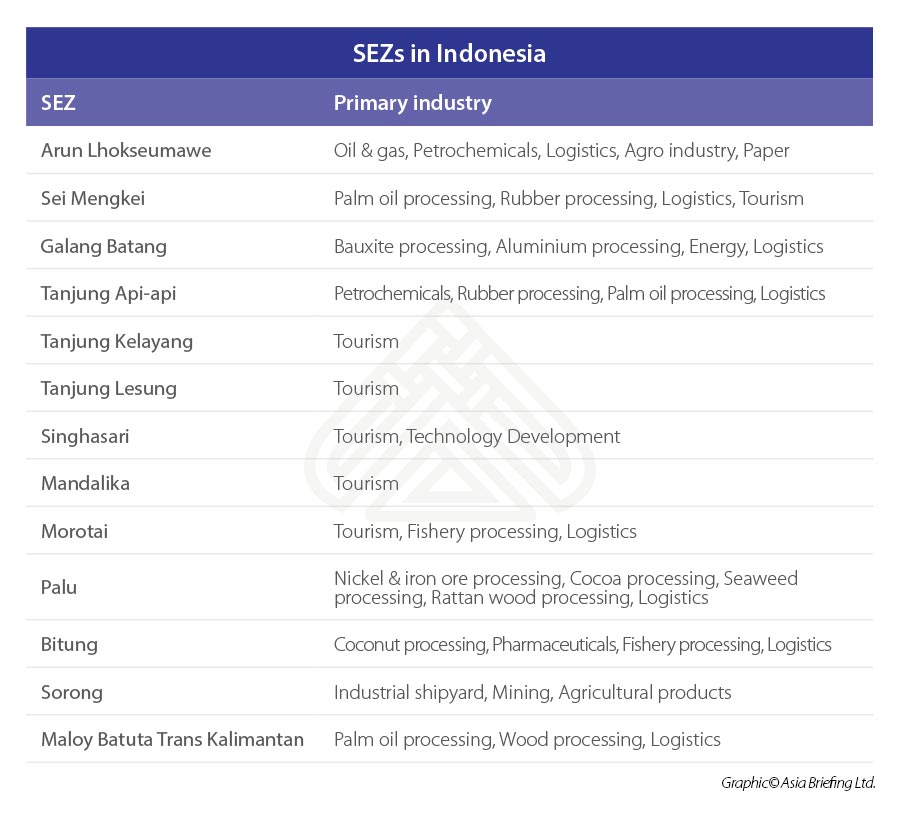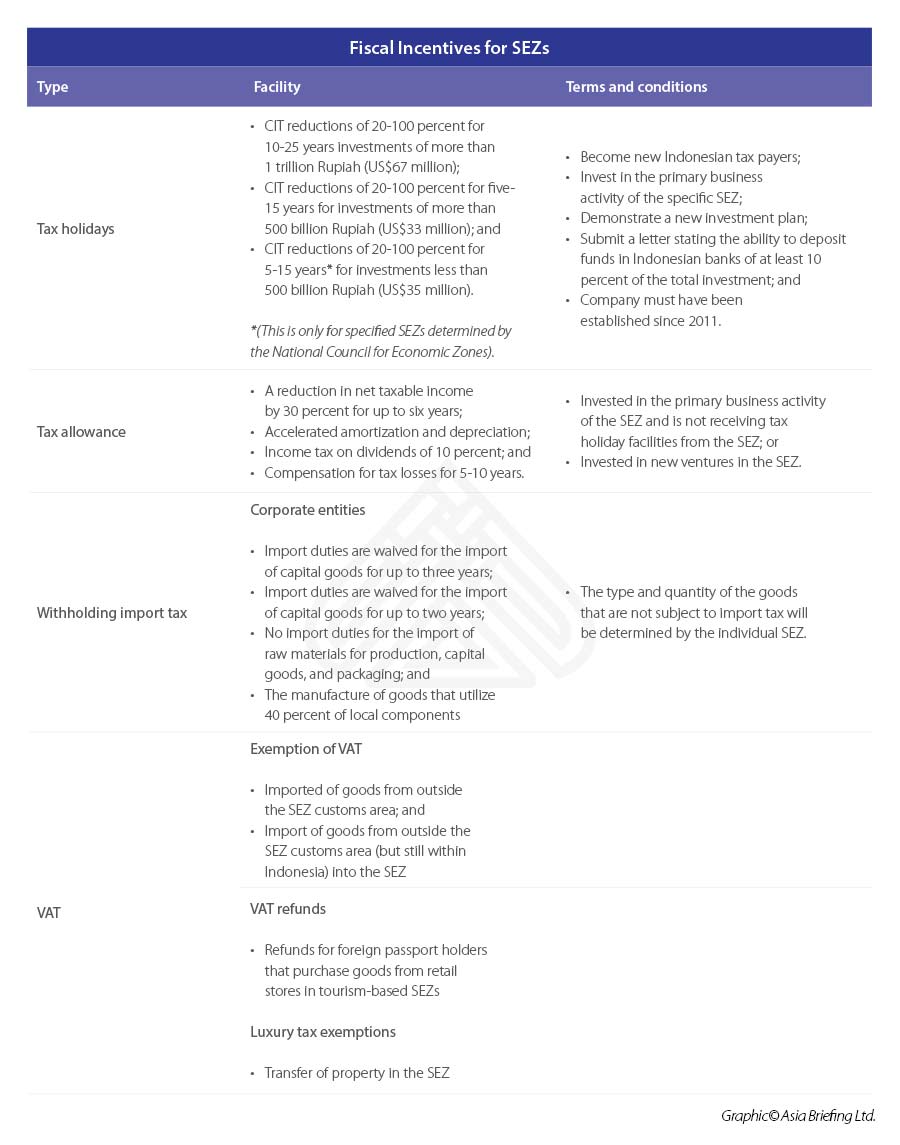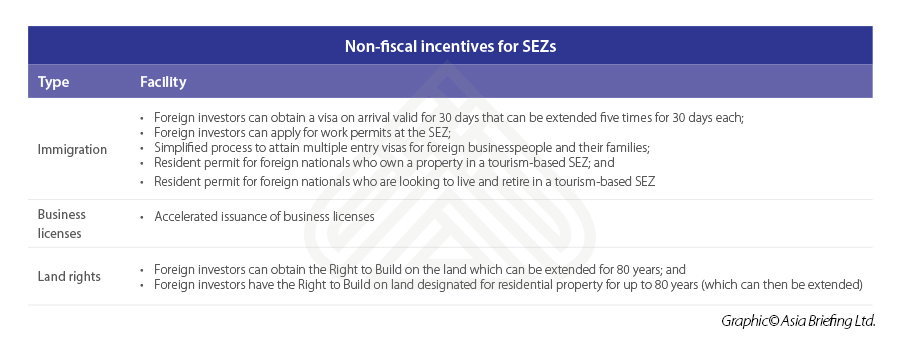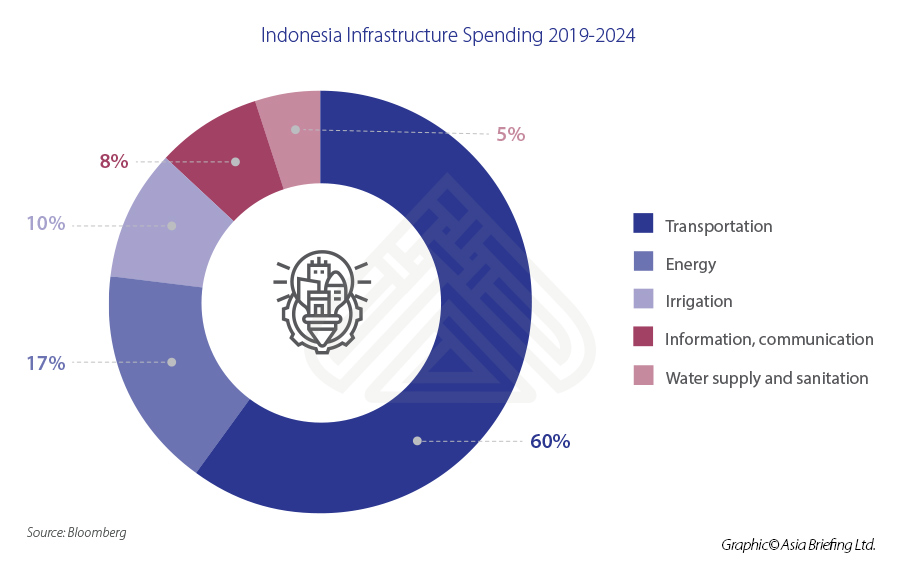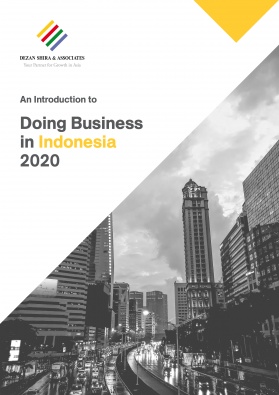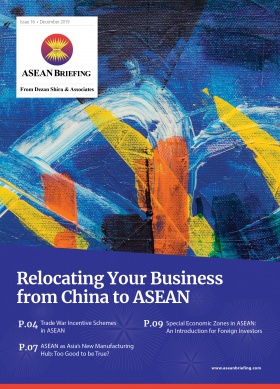Planning Your 2021 Investment Budget: Opportunities in Indonesia
- International businesses planning their 2021 investment budgets should see Indonesia as ASEAN’s best growth potential in the long-term.
- Already the largest economy in the region, Indonesia is expected to become the world’s fourth-largest economy in terms of purchasing power parity by 2030.
- The government is continuing to enact structural reforms to develop a more competitive business environment for foreign investors.
As businesses begin to plan their investment budgets for 2021, Indonesia presents a huge opportunity for foreign investors given its status as the largest economy in ASEAN, a young workforce, and a rapidly expanding middle-class.
Since overcoming the Asian financial crisis in 1998, Indonesia has developed into a vibrant economy, able to consistently maintain GDP growth at five percent before the onset of the COVID-19 pandemic. Further, interest rates have also remained low and domestic consumption has risen — accounting for 60 percent of GDP.
The current government has been eager to enact prudent macroeconomic policies and reforms to improve the investment climate. This includes creating online systems to manage various administrative processes, such as tax filings, applying for business permits, and customs documentation.Now a member of the G20, the country offers foreign investors the best growth potential for those seeking long-term commitments, especially to complement operations in China.
Indonesia’s business environment
ASEAN’s largest labor market
Indonesia is the world’s fourth most populous country (272 million) with a young demographic averaging 30 years of age. Additionally, 60 percent of the population is under the age of 40. This makes Indonesia ASEAN’s largest labor market with over 130 million workers.
The country’s current stage of development makes it ideal for labor-intensive manufacturing and the country is already a prominent producer of garments and textiles in addition to automobiles.
Despite its large labor market, only 55 million workers are considered ‘skilled’ and productivity is relatively low compared to its ASEAN counterparts. The government predicts that Indonesia requires 100 million skilled workers by 2030 as it aims to become the world’s fourth-largest economy in terms of purchasing power parity.
To encourage human capital development, the government is offering businesses tax incentives for those establishing apprenticeships or training programs.
Indonesia has also one of the regions’ lowest wage rates and every province sets its own minimum wage. The lowest is in the Special Region of Yogyakarta set at 1,705,000 rupiah (US$115) and the highest is in the Special Capital Region of Jakarta, at 4,200,000 rupiah (US$285).
Tax incentives
For the 2020-2021 fiscal year, Indonesia has reduced its corporate income tax (CIT) rate to 22 percent from 25 percent, and it will be reduced further to 20 percent in 2022.
Other applicable CIT rates are:
- Public companies that offer the minimum requirement of 40 percent of total share capital are subjected to a five percent tax cut from the standard rate, allowing them to pay 20 percent CIT;
- Companies that have an annual turnover of 50 billion rupiah (US$3.5 million) are eligible for a 50 percent tax cut from the standard rate, which is imposed proportionally on the part of the gross turnover of 4.8 billion rupiah (US$341,000); and
- Companies with a gross turnover of no more than 4.8 billion rupiah (US$341,000) are subject to 0.5 percent tax of total turnover.
Over the past year, the government has issued a variety of other tax incentives to encourage greater foreign investments.
In March 2019, the government issued PMK-32, which expanded the list of export services eligible for zero-rated value-added tax (VAT).
Export services are defined as the production of goods, facilities, or rights that are produced in Indonesian territory by a taxable entity.
The following types of exported services subject to zero-rated VAT:
- Toll manufacturing;
- Repair and maintenance;
- Freight forwarding services for export-orientated goods;
- Construction consulting services (which includes the development of feasibility studies, assessments, and designing of a building or master plan that is located outside of Indonesia);
- Information and technology services;
- Research and development services;
- Charter of aircraft or ships for international flights or shipping services;
- Business consultation and management;
- Legal consultation;
- Architecture and interior design consulting;
- HR consulting;
- Marketing;
- Engineering;
- Accounting or bookkeeping;
- Taxation;
- Financial audits;
- Trading services to find Indonesian suppliers for export purposes; and
- Interconnection, satellite providers, and/or communication and data connectivity.
In June 2019, GR 45/2019 was issued, which sets out a series of tax incentives for businesses that invest in labor-intensive industries, training programs, as well as research and development (R&D).
Under GR 45/2019, taxpayers that invest in pioneer industries can enjoy a net income reduction of 60 percent of their total investment in the form of tangible fixed assets. Taxpayers looking to start apprenticeship programs or training activities to develop workers based on ‘certain competencies’ can receive a gross income reduction of up to 200 percent of the total costs incurred.Finally, there is a tax facility of 300 percent in gross income reduction of the total costs incurred in R&D activities.
Special economic zones
Indonesia operates 13 special economic zones (SEZ), which offer growing opportunities for investments in manufacturing, agriculture, natural resources, and tourism.
The government has also provided a number of SEZ-specific fiscal and non-fiscal incentives for investors.
Trade agreements
As a member of ASEAN, Indonesia is part of ASEAN’s regional free trade agreements (FTA) as well as its own bilateral agreements. These provide a wide variety of benefits such as the removal or reduction of tariffs.
These are:
ASEAN Free Trade Area
The ASEAN Free Trade Area (AFTA) was signed in 1992 with the aim to be a catalyst to help ASEAN become a production base for global markets. Under the agreement, goods originating in ASEAN have applied a 0-5 percent tariff rate.
Preferential Tariff Arrangement-Group of Eight Developing Countries
The agreement, also known as D-8, was signed in 2008 and includes the countries of Malaysia, Iran, Indonesia, Pakistan, Nigeria, Bangladesh, Egypt, and Turkey. Tariffs between these countries have been reduced ranging from 25-8 percent for various products.
ASEAN-Australia and New Zealand FTA
The ASEAN-Australia and New Zealand Free Trade Area (AANZFTA) came into force in January 2010. Through the AANZFTA, 90 percent of tariffs were eliminated and barriers to trade in services have been progressively liberalized following increased market access.
ASEAN-People’s Republic of China FTA
This agreement was signed in 2002 and by 2004, Indonesian exports were open to the Chinese market. Some 90 percent of tariffs on imported goods have been reduced or eliminated.
ASEAN-Hong Kong, China FTA (AHKFTA)
This trade agreement came into force in June 2019. Indonesia will eliminate duties for 75 percent of its products within 10 years and another 10 percent of its tariff lines within 14 years.
ASEAN-India FTA
The ASEAN-India Free Trade Area (AIFTA) was signed in 2009, resulting in one of the world’s largest FTAs. The agreement has seen tariffs eliminated for 90 percent of products traded between the two regions which include products such as palm oil, pepper, tea, and coffee.
ASEAN-Japan Comprehensive Economic Partnership
The ASEAN-Japan Comprehensive Economic Partnership (AJCEP) was enforced in 2008. AJCEP liberalizes trade in goods between Japan and the bloc particularly in areas such as intellectual property, agriculture, fisheries, and forestry.
ASEAN-Republic of Korea Comprehensive Economic Cooperation Agreement
The ASEAN-Republic of Korea Free Trade Agreement (AKFTA) was signed in 2005 and has eliminated more than 90 percent of tariffs between ASEAN and the Republic of Korea. Additionally, the agreement has also liberalized the investment process and there has been enhanced cooperation in trade services.
Indonesia-Pakistan PTA
Indonesia and Pakistan signed a preferential trade agreement (PTA) in 2013. Trade between the two countries reached more than US$2 billion in 2019, with Pakistan being a major export market for Indonesian palm oil products. Both countries are aiming to upgrade the PTA into an FTA going forward.
Indonesia-Chile IC-CEPA
The Indonesia-Chile Comprehensive Economic Partnership Agreement (IC-CEPA) was ratified in October 2019. Under the agreement, Chile has eliminated 89 percent of tariffs for Indonesian products while Indonesia eliminated 86 percent of tariffs for imports from Chile.
Palm oil and its derivatives, automotive products, footwear, furniture, and textile products are some of the main products imported by Chile from Indonesia.
Indonesia-Japan Economic Partnership Agreement
The Indonesia-Japan Economic Partnership Agreement (IJEPA) came into effect in July 2008. Indonesia eliminated 93 percent of its 11,000 tariffs on Japanese goods and Japan eliminated 90 percent of its 9,000 tariffs on Indonesian products. Both countries are set to upgrade IJEP.
What sectors show the greatest potential for foreign investors?
Manufacturing
Indonesia is keen to diversify and develop its manufacturing sector and transform its low-value manufacturing capabilities to more high-value products.
The government hopes this can be achieved through developing the automotive industries, chemical manufacturing, and electronics through the Making Indonesia 4.0 roadmap.
The sector currently contributes to 20 percent of GDP and employs 15 percent of the workforce, with the government aiming to increase this to 25 percent of GDP by 2030, turning Indonesia into a manufacturing hub by 2030 that rivals Germany and South Korea.
Indonesia’s main areas of production are in electronics, automotive, textiles and garments, footwear, food and beverages, and chemicals. These sub-sectors are dominated (99 percent) by micro, small, or medium enterprises (MSMEs).
The majority of the manufacturing hubs in the country are located on the island of Java, which accounts for 58 percent of total GDP. The government is trying to expand this to other regions of the country.
Infrastructure
During President Joko Widodo’s first term (2014-2019) he announced an ambitious infrastructure plan worth US$350 billion. Now into his second term, the government intends to spend another US$400 billion on infrastructure projects across the country.
This includes developing 25 new airports, waste-to-energy facilities, as well as mass transit projects. The government will also build 2,600 km (1,600 miles) of new highways and construct 35,000 MW of electricity plants. Further, the construction of the new capital city on the island of Borneo will begin in 2021, which is set to cost US$33 billion.
Some 40 percent of the cost of these projects will be funded by the government, 25 percent through state-owned companies, and the rest from the private sector.
Digital economy-based industries
By 2025, Indonesia’s digital economy will be estimated to be worth US$130 billion, making it ASEAN’s largest.
E-commerce will play a leading role in this sector, with over 170 million people already engaging in some form of online shopping. This industry is expected to reach US$40 billion by 2022.
In May 2020, the government issued Reg 50/2020, which provides the legal guidelines for international and domestic businesses that are trading through electronic systems (e-commerce).
Moreover, in June 2020, the country’s Director General of Tax issued Reg 12/2020, which sets out the criteria for foreign digital service providers to collect VAT in Indonesia. From July 2020, a 10 percent VAT rate will be applied to businesses that have a ‘significant economic presence’ in Indonesia, covering software providers, multimedia, and big data firms, among others.
Indonesia joins other ASEAN members Malaysia and Singapore in trying to increase tax revenues through new channels.
In addition to e-commerce, 5G industries, telemedicine, online education, and electronic payment systems are some of the new sub-sectors that show huge potential growth in the country. Despite Indonesia being the world’s second-largest cash-based economy, changing consumer behavior accelerated by the pandemic has forced communities to embrace more digital solutions.
Healthcare and pharmaceuticals
Given its large market-size, Indonesia’s healthcare sector presents a lucrative opportunity for foreign investors.
The government’s annual spending on healthcare has skyrocketed since the implementation of the universal healthcare program (BPJS) in 2014, which has now grown to be the world’s largest, covering some 200 million people. Every citizen and expatriate are mandated to join, and companies must register their employees to the program, paying a percentage of the premiums.
Increasing spending on healthcare will impact important sub-sectors such as the medical devices industry, which was valued at US$4.5 billion in 2019. The majority of this, US$2.8 billion, was from imports. Indonesia mainly imports sophisticated medical instruments such as PET-CT scanners and ICU equipment and exports low-tech equipment, such as gloves and syringes.
The pharmaceutical industry is dominated by generic drugs (70 percent) with the remainder from over the counter (OTC) drugs. The BPJS program has boosted sales of generic drugs in the country, valued at more than US$700 million.
However, the industry is highly dependent on imports of raw materials, which prompted the government to enact reforms and allow foreign investors 100 percent ownership of factories that produce these essential raw materials. Additionally, there is a new demand for more niche products outside of generics, in particular those that treat lifestyle and chronic related diseases.
As part of ongoing reforms within the industry, foreign investors can now have up to 67 percent ownership of private hospitals. This increases to 70 percent if the investor is from an ASEAN country. This is also the case for clinics although foreign investors are limited to owning specialized clinics and not those that provide basic medical services.
Fast-moving consumer goods
Indonesia’s middle-class of 70 million has become the backbone of the country’s fast-moving consumer (FMCG) market.
Foreign investors will find potential growth in the modern retail sector, as the retail landscape is slowly expanding away from Greater Jakarta to regional capital cities across the country, such as Banda Aceh, and Bandung.
The spread of modern retail has seen the food and beverage segment reap most of the benefits with large multinationals such as McDonald’s, KFC, Burger King, Coca-Cola, gaining the first-mover advantage in the country.
Growing purchasing power has also benefited the fashion segment. Japan’s Fast Retailing Co opened four stores in 2013 and by 2020 has over 30 spread through second and third-tier cities in Indonesia. Another segment benefitting from the expansion of modern retail is the cosmetics industry which saw sales of over US$1.2 billion prior to the pandemic.
In recent years, the FMCG industry has been enacting reforms to cater to an increasingly Halal conscious consumer market. The government finally issued the Halal Law in October 2019, mandating consumer products and their related services to be Halal-certified.
This initially applies to food and beverages, but cosmetics and drug products will have to comply by 2022.
The government has embarked on an ambitious push to establish Indonesia as the world’s largest international Halal market, hoping to capture a large chunk of the US$2.1 trillion global Halal economy. The government hopes the country’s Shariah economy will add 100,000 jobs and contribute US$11 billion in exports.
About Us
ASEAN Briefing is produced by Dezan Shira & Associates. The firm assists foreign investors throughout Asia and maintains offices throughout ASEAN, including in Singapore, Hanoi, Ho Chi Minh City and Jakarta. Please contact us at asia@dezshira.com or visit our website at www.dezshira.com

